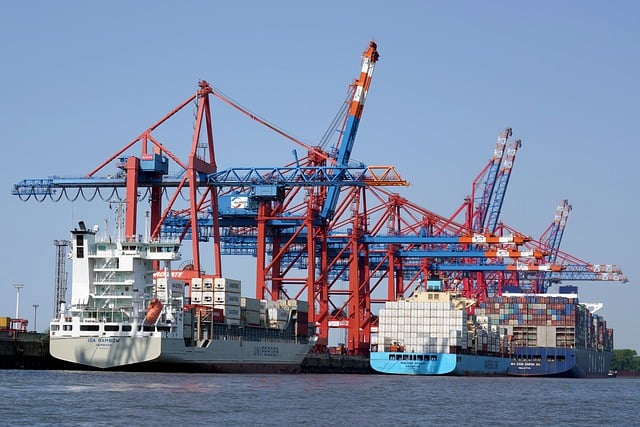
How to choose a reliableThe MaritimeThe containerThe agent?
When selecting an agent, focus on three key factors:Certification of Qualification(At least possessing NVOCC Non-Vessel Operating Common Carrier qualification),Route coverage(Scheduled weekly fixed sailings to the destination port),Emergency handling capabilitiesIt is recommended to request the agent to provide loading records for at least five clients on the same route over the past six months, with a focus on reviewing their solutions for customs inspections and rollovers.
The SeaTransportation expensesWhat specific items are included?
Typical ocean freight cost composition in 2025:
- Basic costs: O/F (Ocean Freight) + BAF (Bunker Adjustment Factor)Additional fees)+ CAF (Currency Adjustment Factor)
- Additional costs:
- Peak Season Surcharge (PSS): Generally applied from June to September each year.
- Low Sulfur Fuel Surcharge (LSF): Adjusted according to actual fuel price fluctuations
- Fixed Miscellaneous Expenses: Documentation Fee (DOC), Seal Fee, Port Construction Fee
customs clearanceWhat documents are required for the process?
Starting from January 2025, the General Administration of Customs will implement"Three-in-One"New regulations require simultaneous preparation of:
- Commercial Invoice (must include HS Code and origin declaration)
- Packing List (with gross weight/net weight specified per carton)
- Power of Attorney for Customs Declaration (Electronic Signature Required)
- Special documents: For food products, an FDA registration number is required; for electronic products, FCC certification is necessary.
How to Avoid the Risk of Being Rolled?
Three-Layer Protection Strategy Against Container Rollover:
- How to prevent damage to LCL cargo?: Choose the direct customer price offered by the shipping company (approximately $50/TEU more expensive but with higher priority).
- Before the cutoff time: Complete the VGM (Verified Gross Mass) declaration 72 hours in advance.
- Emergency Plan: Include a compensation clause for rollover in the contract (recommended daily compensation of no less than 20% of the freight cost).
What are the new methods for cargo tracking?
The three mainstream tracking technologies in 2025:
- Blockchain Electronic Seal: Real-time monitoring of container switch status
- Satellite IoT devices: Monitor the status of goods such as temperature and humidity.
- Shipping company API integration: Directly obtain vessel dynamic data (such as Maersk's Maersk Spot)
How should marine insurance be purchased?
34. It is recommended to take out insuranceAll RisksAnd note:
- The insurance policy must cover the transit process (including temporary storage at ports).
- Additional War Risk (currently mandatory for Red Sea routes)
- The declared value should be 110% of the CIF price.
What are the special requirements for transporting hazardous materials?
According to the IMDG CODE 2025 Amendment:
- It must be submitted 14 days in advance.Dangerous Goods Declaration (DGD)
- The packaging must be UN-certified and labeled with the latest version of hazardous material markings.
- Lithium battery goods require separate declaration of watt-hour (Wh) rating.
What to do when encountering customs clearance delays at the destination port?
Steps to handle customs clearance delays:
- Request the agent to provide immediately.Proof of Delivery (POD)
- Verify whether the consignee information on the bill of lading matches the customs clearance documents.
- If it is a customs inspection, the missing documents must be submitted within 48 hours.
- Consider applying for temporary storage of goods (a deposit is required).
How to secure cabin space during peak season?
Recommended peak season booking strategy for 2025:
- Sign the contract 8 weeks in advance.Cabin Booking Agreement(A 20% deposit is required)
- Adopt a dual-guarantee solution of "mother ship + extra ship".
- Flexibly select alternative ports (e.g., for European cargo, Piraeus Port can be considered as an alternative to Hamburg).
How to effectively protect your rights in case of a dispute?
It is recommended to adopt a four-level dispute resolution mechanism:
- First level: Resolve through negotiation based on the agency contract.
- Second Level: Apply for FIATA International Arbitration (for disputes under USD 50,000)
- Level 3: Initiate arbitration with the China Maritime Arbitration Commission (CMAC).
- Level 4: Litigation through maritime courts (requires preparation of a complete chain of transport documents)


 Follow Customer Service WeChat
Follow Customer Service WeChat